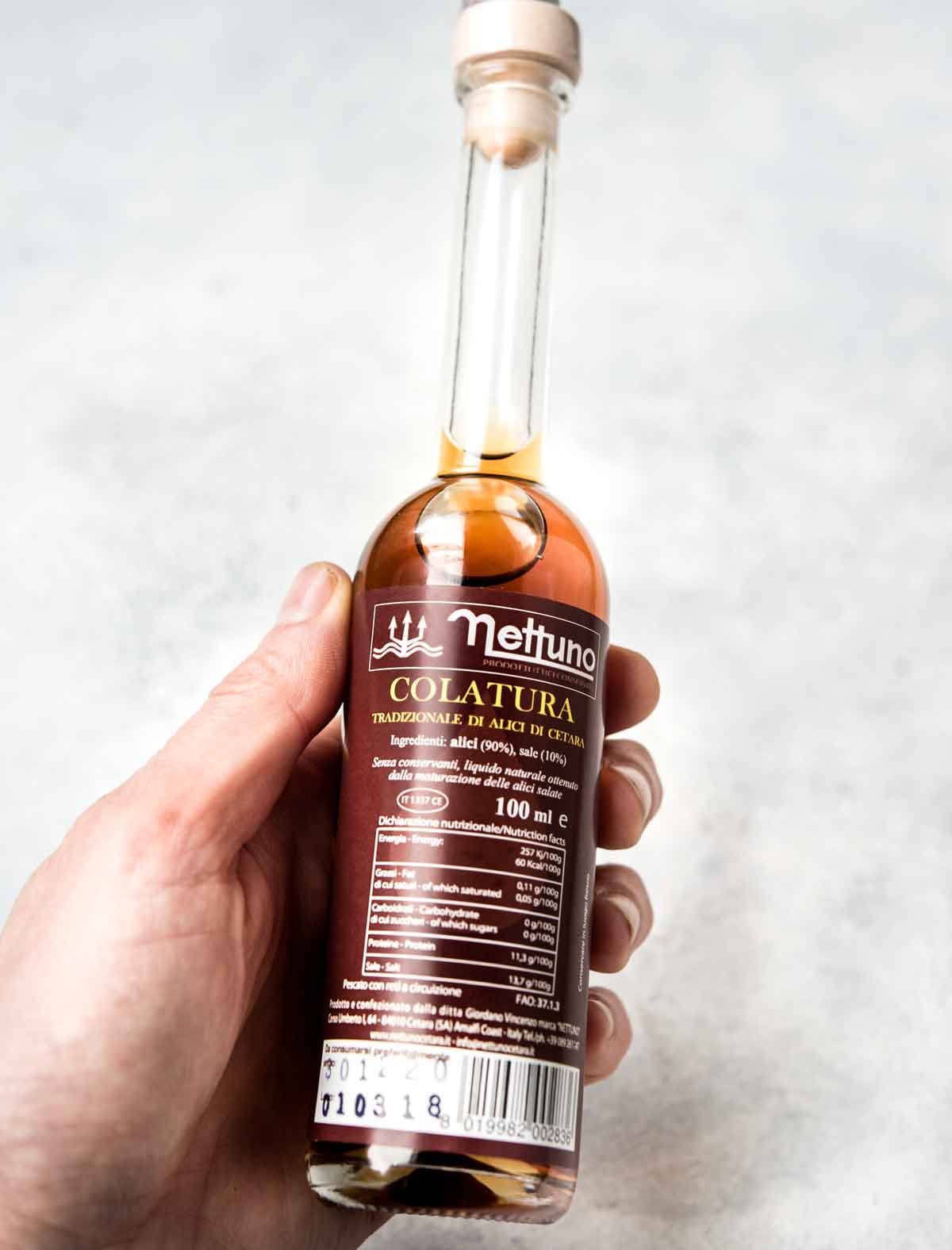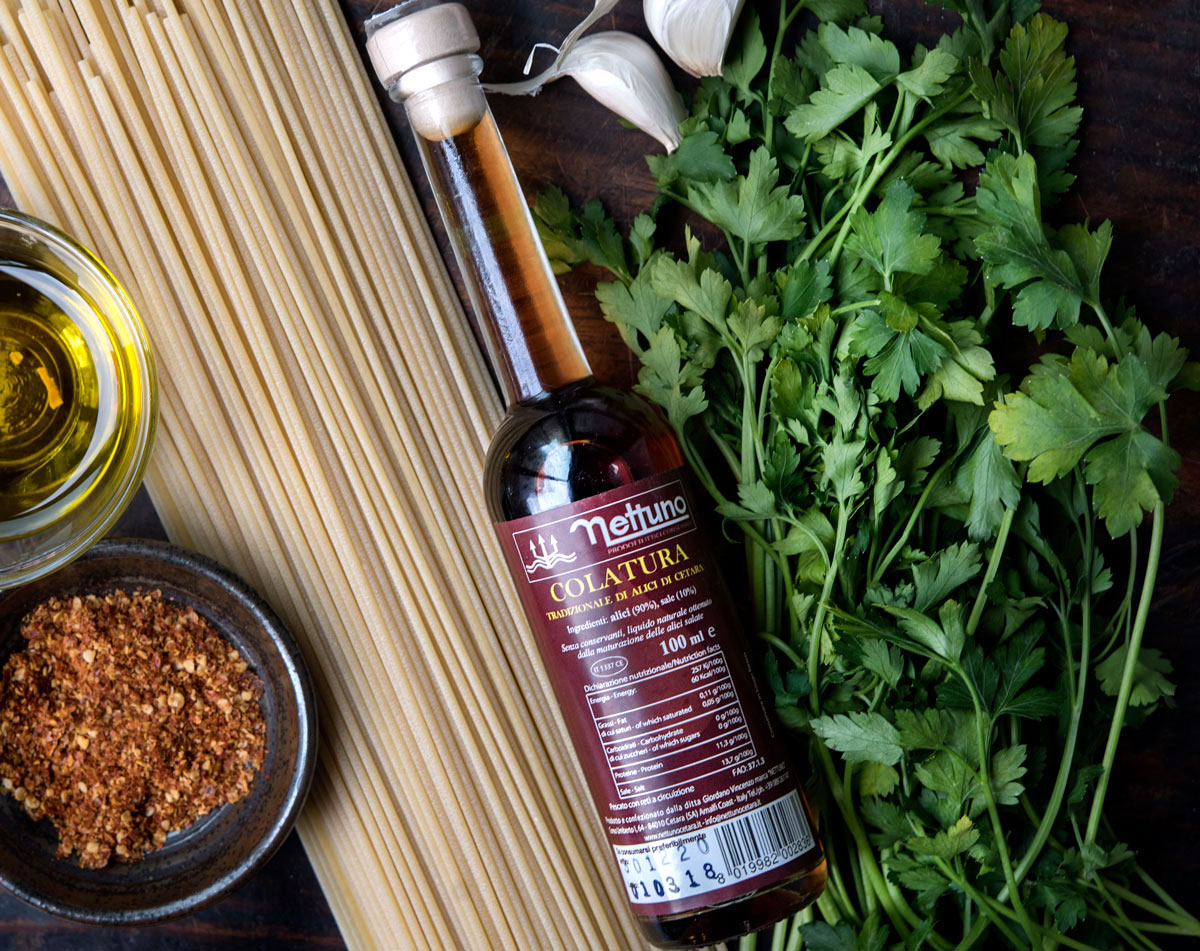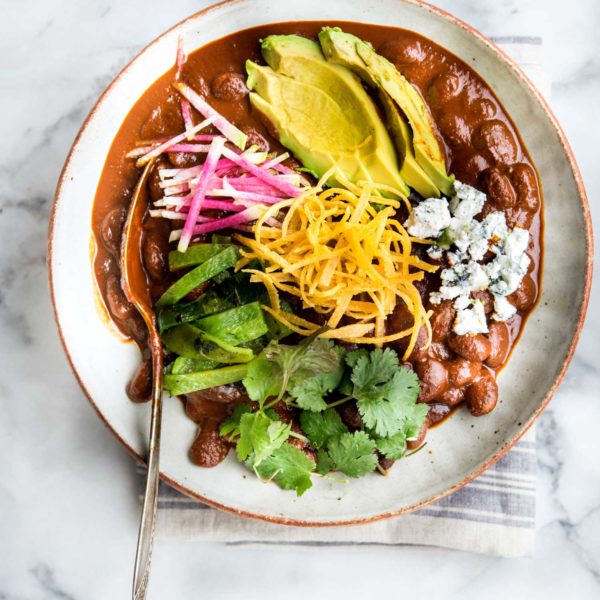
Colatura di allici — anchovy drippings — is an Italian fish sauce derived from an ancient Roman recipe of Italy’s Amalfi Coast. It’s an amber colored liquid made by fermenting anchovies in brine; the fish sauce is extracted from anchovies packed in chestnut wood barrels for at least five months.
I first came across colatura in watching an episode of Andrew Zimmern’s Bizarre Foods with Katie Parla (a food educator and journalist living in Rome). Of course, I had to get my hands on a bottle (culinary ‘research’ and all), as these are the things that excite me in life, especially the idea of keeping ancient culinary traditions alive through word of mouth (or, present-day blogging).
If you’re someone, like myself, who gets excited about briny little fishes, then colatura has your name written all over it. From a flavor standpoint, it’s noticeably different than the Asian fish sauce you might be accustomed to. Colatura has a more refined, more subtle anchovy flavor; less ‘fishy’ than your typical Asian-style fish sauce.
Yes, it’s expensive, especially compared to Asian-style fish sauce. That being said, a little bit (of something special) goes a long way. A teaspoon or two per serving is all you need. Mix a teaspoon of colatura with some olive oil, garlic, lemon zest and parsley and toss with pasta, roasted potatoes, vegetables or sauteéd greens.
According to Nettuno’s website: “Colatura is believed to be the modern descendant of garum, a Roman fish sauce that dates back at least as far as the third century BC. Garum became a staple of Roman cuisine, and spread throughout the empire; remains of garum production sites were found in Spain, Portugal, and northern Africa. After the collapse of the Roman empire, garum all but disappeared, except in pockets of southwest Italy. Today, the best quality colatura comes from Cetara, a charming fishing village on the Amalfi coast in Campania, home of our trusted anchovy and colatura producer Nettuno.
A family-run company founded in 1945, Nettuno’s production is done completely by hand, inspired by the simple but precise rules of the local anchovy traditions. They catch their anchovies and place them in small chestnut barrels, layered with Sicilian sea salt from Trapani. The lid of the barrel is weighted down by rocks. The anchovies age for about two years. Then, a hole is poked in the bottom of the barrel and the anchovy juice is drained, drop by drop”.
Have you tried colatura di allici? Thoughts? How do you like to use it?







